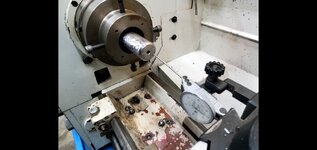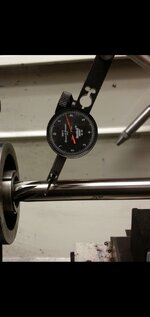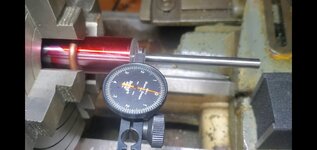onlybrowning
WKR
- Joined
- Nov 27, 2023
- Messages
- 589
I have started venturing into my own gunsmithing practices over the years, because in my area, real gunsmiths exist, but they won’t for long, and their lead times don’t lend themselves to my busy schedule.
This first happened with archery, and I found myself with a press, draw board, and other archery tools that let me perform the tasks of the local bow shops on my schedule. With YouTube and forums, the learning curve is much less steep.
On guns, I have now done basic things like grind to fit recoil pads, wood stock refinishing, bedding, and now cutting and crowning my own barrels.
I am sharing to report that the Brownells 90 degree facing tool and 11 degree (they call it 79 degree) crowning tool, make easy work of shortening a barrel and provide gunsmith quality results.
If you are at all mechanically inclined, I recommend these tools. It was simple and straightforward to get really good results cutting and crowning two barrels. One is a Kimber 84m 6.5 cm cut to 20” and one is a Browning A Bolt Mountain Ti in a browning A Bolt .243 win in a digital camo stalker stock (lighter weight) that I bedded and cut to 20.”
I can’t wait to shoot them both and see how they fare after the work.
I haven’t tackled threading (my state doesn’t allow suppressors), so I can’t speak to that, but the Brownells tools are legit.
Sent from my iPhone using Tapatalk
This first happened with archery, and I found myself with a press, draw board, and other archery tools that let me perform the tasks of the local bow shops on my schedule. With YouTube and forums, the learning curve is much less steep.
On guns, I have now done basic things like grind to fit recoil pads, wood stock refinishing, bedding, and now cutting and crowning my own barrels.
I am sharing to report that the Brownells 90 degree facing tool and 11 degree (they call it 79 degree) crowning tool, make easy work of shortening a barrel and provide gunsmith quality results.
If you are at all mechanically inclined, I recommend these tools. It was simple and straightforward to get really good results cutting and crowning two barrels. One is a Kimber 84m 6.5 cm cut to 20” and one is a Browning A Bolt Mountain Ti in a browning A Bolt .243 win in a digital camo stalker stock (lighter weight) that I bedded and cut to 20.”
I can’t wait to shoot them both and see how they fare after the work.
I haven’t tackled threading (my state doesn’t allow suppressors), so I can’t speak to that, but the Brownells tools are legit.
Sent from my iPhone using Tapatalk



